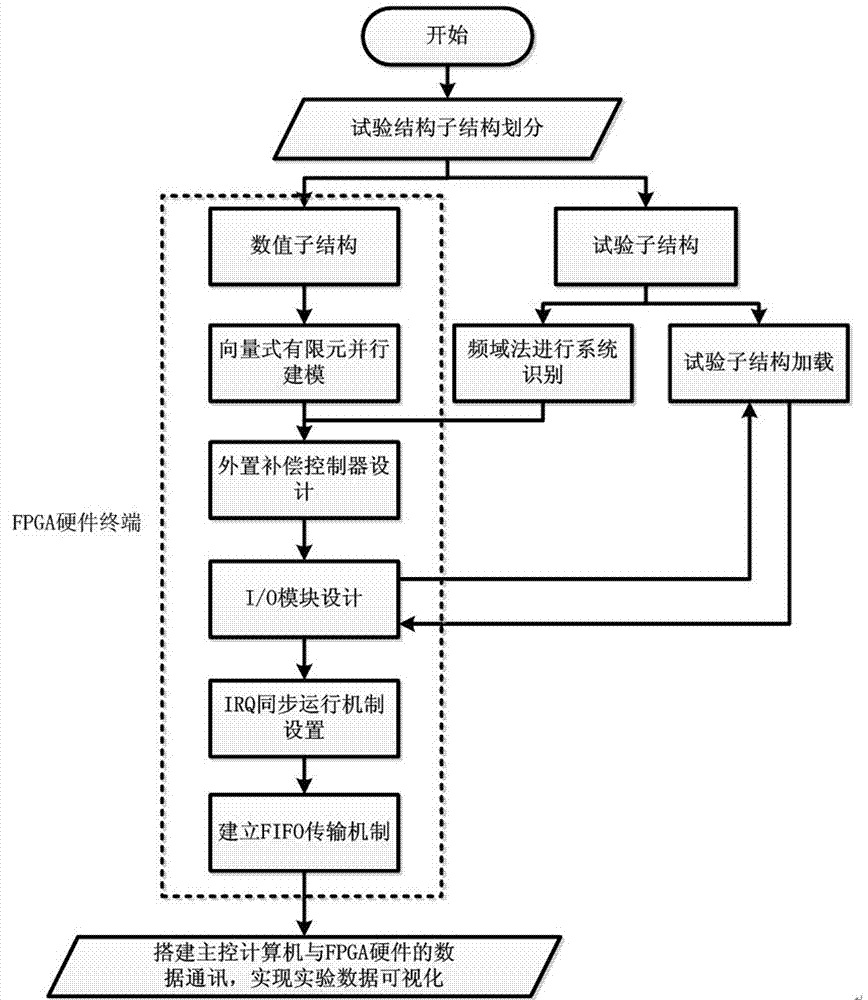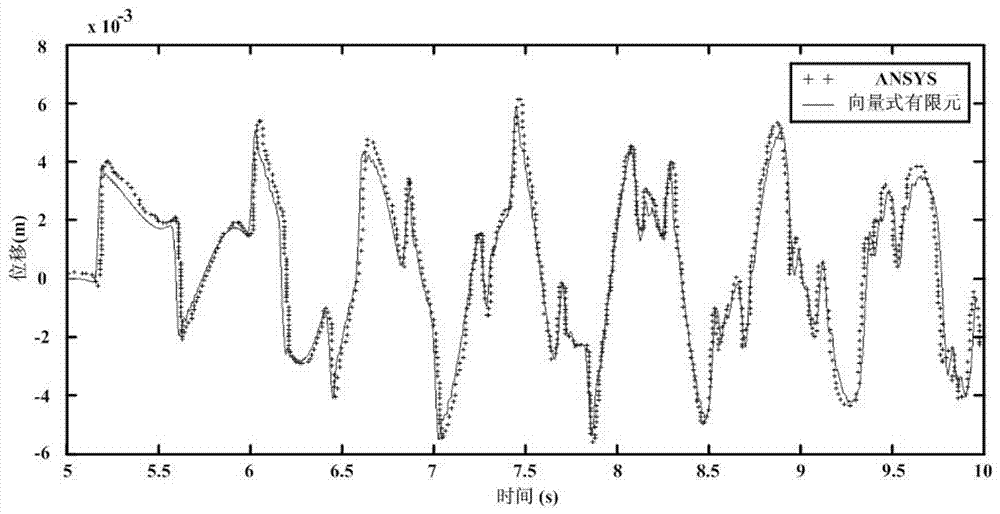Hybrid test method based on vector finite element and FPGA
A hybrid test and finite element technology, applied in the field of hybrid test based on vector finite element and FPGA, can solve problems such as limiting the real-time application range of hybrid test, high computational pressure on numerical substructures, and inability to realize real-time effects.
- Summary
- Abstract
- Description
- Claims
- Application Information
AI Technical Summary
Problems solved by technology
Method used
Image
Examples
Embodiment Construction
[0069] Describe the specific embodiment of the present invention in detail below in conjunction with accompanying drawing and embodiment, wherein figure 1 It is a schematic flow chart of an embodiment of the present invention. In this embodiment, a real-time substructure hybrid test based on vector finite element and FPGA is used to test the structural dynamic response of the cable-stayed damping system. The schematic diagram of the real-time substructure test of the cable-stayed damper system based on vector finite element and FPGA is shown in Fig. figure 2 As shown, the length of the stay cable is 18.75m, the inclination angle to the ground is 12.5 degrees, the tensile stiffness EA=911000N, the linear density ρ=0.76kg / m, and the initial tension is 1286N. As a simple example, here the damper is selected as a pure viscous damper with damping coefficient C=300N·s / m, and it is placed below the No. 2 node. The implementation steps of the real-time substructure test based on th...
PUM
 Login to View More
Login to View More Abstract
Description
Claims
Application Information
 Login to View More
Login to View More - R&D
- Intellectual Property
- Life Sciences
- Materials
- Tech Scout
- Unparalleled Data Quality
- Higher Quality Content
- 60% Fewer Hallucinations
Browse by: Latest US Patents, China's latest patents, Technical Efficacy Thesaurus, Application Domain, Technology Topic, Popular Technical Reports.
© 2025 PatSnap. All rights reserved.Legal|Privacy policy|Modern Slavery Act Transparency Statement|Sitemap|About US| Contact US: help@patsnap.com



